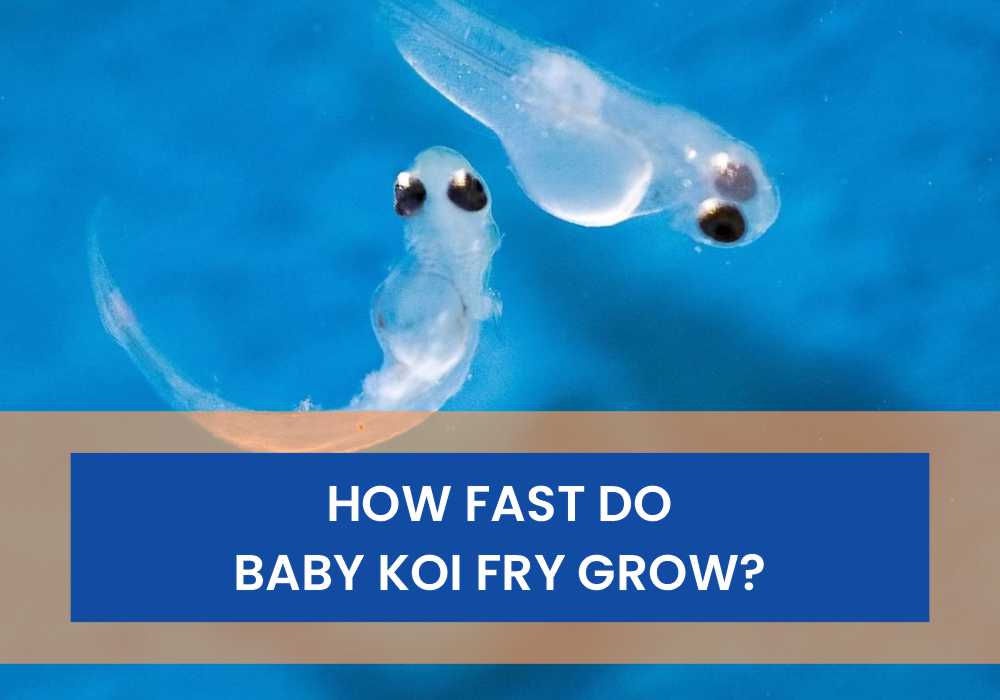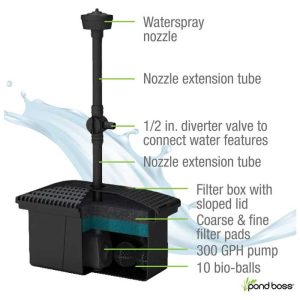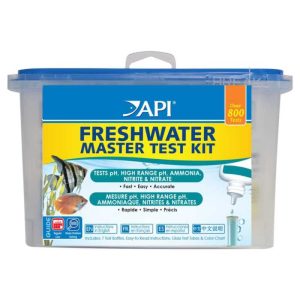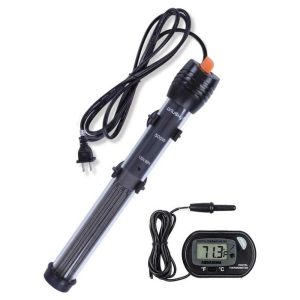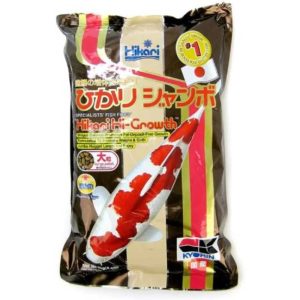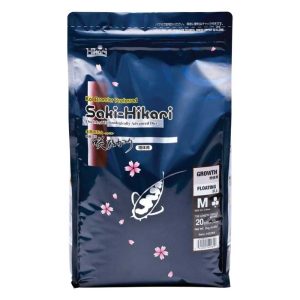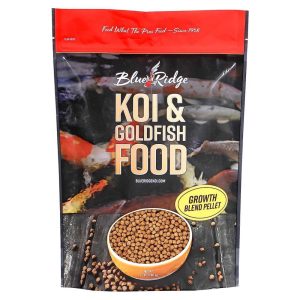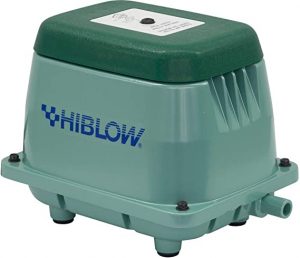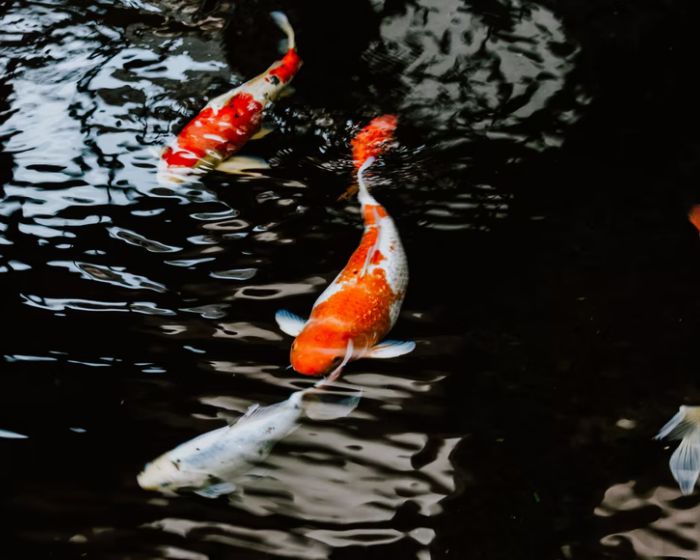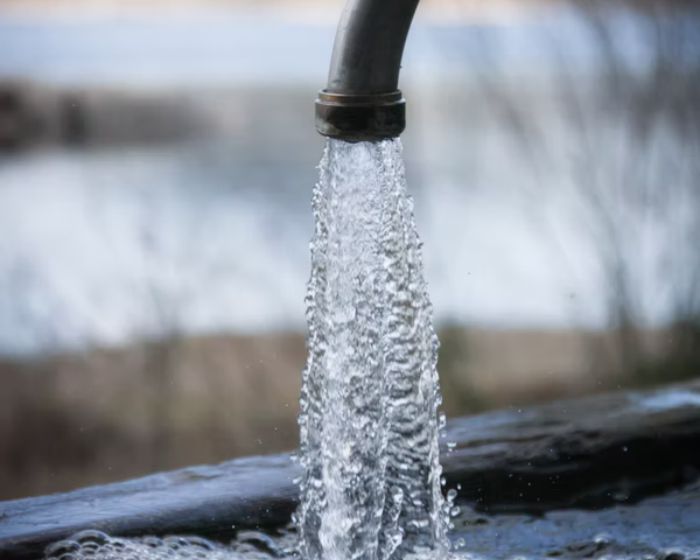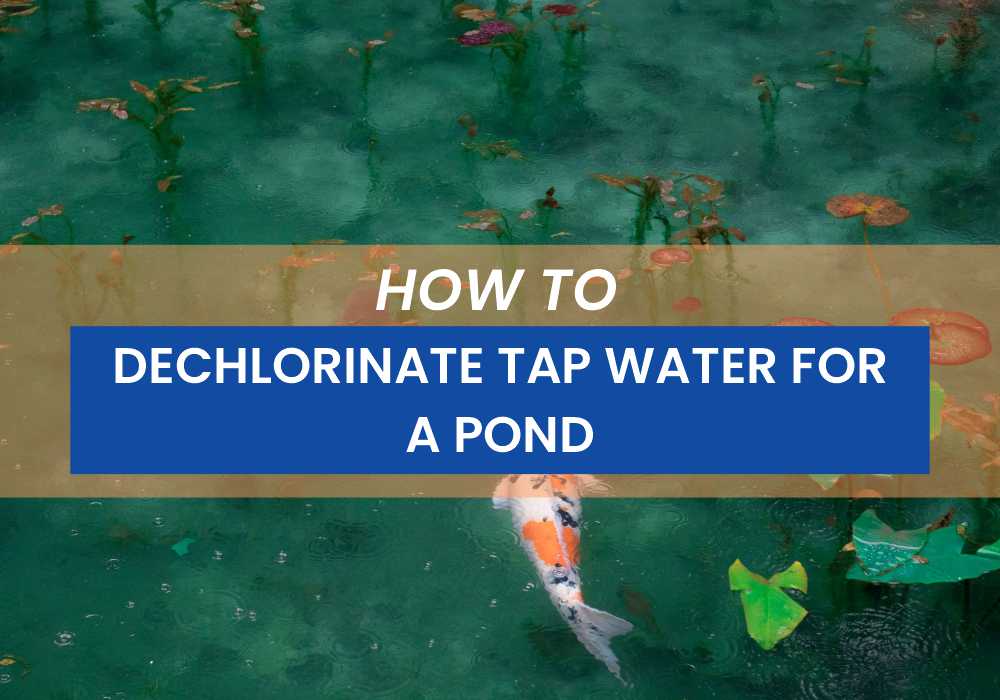As an Affiliate, We may earn a commission that doesn't cost you extra from qualifying purchases using links in this post. It helps keeps this blog running.
Koi fry are beautiful fish that make a wonderful addition to any pond or aquarium. With the proper care, they will thrive and grow to be healthy and vibrant adult koi. As koi fry grows, they must be given the proper care in order to thrive. Koi fry are extremely delicate when they are first born and need to be kept in clean, well-oxygenated water. They also need to be fed small amounts of food several times a day.
As koi fry grows larger, they can be moved to a larger tank or pond. They will still need to be fed several times a day and the water must be kept clean and well-oxygenated. Koi fry grows quickly and can reach its full size in just a few months.
How Quickly Do Baby Koi Fry Grow?
Koi fry can grow very quickly if they are well cared for. Fry growth rates will vary depending on the quality of food and water, but fry can grow up to 2 inches in 3 months. If you would like your koi fry to grow fast, it is important to give them high-quality food and keep the water clean. Fry can also be given growth hormones to help them grow even faster.
Koi fry growth will also depend on the size of the fish. Large koi fry will usually grow faster than small koi fry. If you want your koi fry to reach their full potential, it is important to provide them with plenty of space to swim and grow. A good rule of thumb is to give each koi fry at least 10 gallons of space.
The Stages Of Koi Fry Growth
Koi fry goes through a few different stages as they grow from eggs to adult fish.
First, there’s the egg stage, where the fertilized eggs attach to a surface or plant in the water. Then, they go through the embryo stage, where they start to develop into fry. After that, they enter the larva stage, where they grow more and become more independent. Finally, they become fry, which is fully-formed juvenile koi.
At each stage, the fry grows in size and weight, and its colors and patterns start to develop.
| Stage of Growth | Description |
|---|---|
| Egg | After fertilization, the eggs will begin to divide and grow, forming a small fish called a fry. |
| Embryo | The eggs begin to divide and grow, forming a small fry. |
| Larva | After hatching from the egg, the fry enters the larval stage of development. During this stage, the fry will continue to grow and develop, gaining more body mass and becoming more independent. |
| Fry | After the larval stage, the koi fish enters the fry stage. At this stage, the fish is a fully-formed juvenile and is ready to live on its own. The fry will continue to grow and develop, gaining more mass and size. |
| Juvenile | As the fry grows and matures, it becomes a juvenile koi fish. At this stage, the fish is nearly fully grown but is not yet sexually mature. |
| Adult | Once the koi fish reaches sexual maturity, it becomes an adult. Adult koi are fully grown and are capable of reproducing. |
Koi Fry Growth Chart Table
A koi fry growth chart typically includes information on the age, stage of growth, size, weight, color, and pattern of the fry at different stages of development. The chart can help to track the growth and development of individual koi fry and ensure that they are healthy and thriving. A sample koi fry growth chart is provided below:
| Age (weeks) | Stage of Growth | Description | Size (inches) | Weight (grams) | Color | Pattern |
|---|---|---|---|---|---|---|
| 1 | Egg | Fertilized egg | 0.1 | 0.1 | Transparent | N/A |
| 2 | Embryo | Developing fry | 0.3 | 0.3 | Transparent | N/A |
| 3 | Larva | Developing fry | 0.5 | 0.8 | Transparent | N/A |
| 4 | Fry | Juvenile koi fry | 0.7 | 1.5 | Dark markings | N/A |
| 8 | Fry | Juvenile koi fry | 1.5 | 7.5 | Developing | N/A |
| 16 | Juvenile | Developing koi | 3.0 | 30 | Developing | N/A |
| 24 | Juvenile | Developing koi | 4.5 | 75 | Developing | N/A |
| 36 | Juvenile | Developing koi | 6.0 | 150 | Developing | N/A |
| 48 | Adult | Fully grown koi | 7.5 | 300 | Fully developed | Varied |
This chart is only a sample and may not reflect the exact growth rates and patterns of all koi fry. It is important to monitor the growth and development of individual koi fry to ensure that they are healthy and thriving.
How Long Does It Take Koi Fry To Grow into Adult?
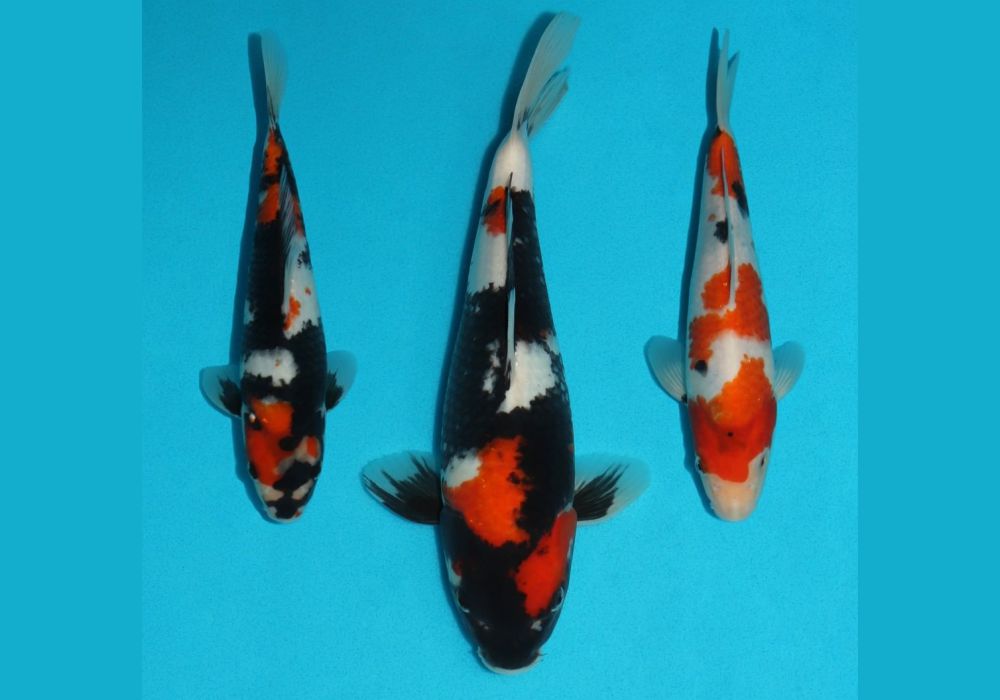
A baby koi fry can grow into an adult in about two years. In the wild, koi can live for up to 50 years, but in captivity, they typically only live for around 30 years. However, this can vary depending on a number of factors, including water temperature, quality and amount of food, and genetics. For example, koi that are born in warmer climates tend to grow more quickly than those in colder regions. In general, koi grow the fastest during their first year of life, with their growth rate gradually slowing down as they mature.
Koi fry will reach the full size of an adult koi fish at around 4-5 years old. However, they continue to grow and mature until they are around 10 years old. With proper care, a koi fry can grow into a beautiful and long-lived adult fish.
Factors Affecting The Growth Of Koi Fry
There are several factors that can affect how fast and how well your Koi fry grows and below are 6 of them:
1. Environmental factors:
The temperature, pH, and dissolved oxygen levels of the water can all affect the growth rate of koi fry. If the conditions are not ideal, the fry may not grow as quickly as it would in more ideal circumstances.
2. Nutrition:
The quality and quantity of food available to the fry can also affect their growth rate. If they are not getting enough food or if the food is of poor quality, they will not grow as quickly as those that have access to better nutrition.
3. Genetics:
Some koi varieties simply grow faster than others, due to their genetics. So, even if everything else is perfect, some koi will simply grow faster than others. There isn’t much that can be done about this, other than to choose a variety that is known for being fast-growing.
4. Stress:
Koi fry that is stressed (due to poor water conditions, overcrowding, etc.) will not grow as quickly as those that are not under stress. So, it’s important to try to minimize stress in the fry’s environment in order to encourage optimal growth.
5. Pond Size:
The size of the pond also plays a role in the growth rate of koi fry. If the pond is too small, the fry may not have enough room to swim and explore, which can stunt their growth. On the other hand, if the pond is too large, the fry may become lost and have difficulty finding food, which can also lead to slower growth. Therefore, it’s important to choose a pond size that is just right for the fry.
6. Health:
Finally, the overall health of the fry can affect its growth rate. If they are sick or have parasites, they will not grow as quickly as those that are healthy. Therefore, it’s important to do everything possible to keep the fry healthy and free from disease.
How To Make Koi Grow Faster
Now that you are familiar with the growth rate of Koi fry and also now know the factors that could affect their growth, it’s understandable that you are now curious and looking to accelerate the growth of your prized fish.
Well, let’s explore effective methods to help your koi grow faster. By implementing the following steps, you can optimize their environment, nutrition, and overall care, leading to accelerated growth and vibrant, healthy koi. So let’s dive in and discover the secrets to making your koi grow faster.
Steps to Make Koi Grow Faster:
1) Provide a Suitable Habitat:
Creating an optimal environment for your koi is essential for their growth. Ensure your pond is spacious enough to accommodate their size, with a minimum depth of 3 to 4 feet. Maintain proper water quality by installing a filtration system and regular water testing. A clean and well-maintained pond will promote healthier growth.
2) Optimize Water Temperature:
Koi thrive in water temperatures between 75°F and 86°F (24°C to 30°C). Keep your pond within this range by using a heater or cooling system, depending on your climate. Consistent and appropriate water temperature helps koi maintain a robust metabolism, enabling faster growth.
3) Provide High-Quality Nutrition:
A well-balanced diet is crucial for promoting rapid growth in koi. Offer a combination of high-quality pellets, live or frozen foods, and occasional treats like earthworms or shrimp. Look for fish food specifically formulated for koi, rich in protein and essential nutrients. Feed your koi small portions multiple times a day, ensuring they consume their food within a few minutes.
4) Monitor and Adjust Feeding:
Regularly monitor the feeding habits of your koi and adjust their diet accordingly. Avoid overfeeding, as it can lead to health problems and poor growth. Adjust the amount of food based on their appetite and growth rate. Additionally, consider feeding your koi during warmer parts of the day, as their metabolism is more active.
5) Provide Adequate Oxygenation:
Proper oxygenation is vital for koi growth. Install an efficient aeration system or use water features like fountains or waterfalls to increase oxygen levels. Well-oxygenated water promotes better digestion and nutrient absorption, aiding in faster growth.
6) Implement Regular Water Changes:
Regular water changes help maintain water quality and remove accumulated waste products. Aim for a 10-20% water change every 1-2 weeks. This reduces the build-up of toxins, ensuring a healthy environment for your koi to thrive and grow.
7) Maintain Proper Stocking Density:
Overcrowding can hinder the growth of koi. Avoid keeping too many fish in a small pond, as it can lead to stress, increased competition for food, and stunted growth. Follow recommended guidelines for stocking density to allow each koi sufficient space to grow and develop.
8) Minimize Stress Factors:
Stress can impede the growth of koi. Minimize stressors like sudden changes in water temperature, poor water quality, handling, and predatory threats. Provide adequate hiding places, like plants or caves, to allow your koi to feel secure and reduce stress.
By following these steps and providing optimal care for your koi, you can enhance koi growth rate and witness their transformation into magnificent, mature fish. Remember, patience and consistency are key to achieving faster koi growth. Enjoy the journey of nurturing these captivating creatures and watching them flourish in your pond.
The Importance of Monitoring Koi Fry Growth
Regularly monitoring the growth of koi fry is important to ensure that they are healthy and thriving. By keeping an eye on their growth, you can identify any potential issues, abnormalities, or health problems early on and take steps to address them before they become more serious. Other reasons are as follows:
- By keeping an eye on the fry’s growth, you can ensure that they are receiving adequate nutrition, care, and good water quality, which are all essential for their health and development.
- Regular monitoring allows you to make any necessary adjustments to the fry’s diet or environment to support their growth and prevent problems.
- Preventing problems such as malnutrition, stunted growth, and disease
- Pay attention to the color and pattern of the fry to ensure they are developing as expected
- By regularly checking the fry’s growth, you can ensure that they are on track and developing properly, and take action if they are not.
- Monitoring the fry’s size, weight, color, and pattern to assess their overall health and development
- Regular monitoring can help you to identify any potential genetic or hereditary issues and take steps to address them.
- Taking appropriate action to address any issues that are identified
- Helping the fry to grow into healthy and beautiful adult koi.
Tips and Guidelines on How to Monitor The Growth Of Koi Fry
One of the key things to look for when monitoring koi fry growth is their size and weight. If the fry is not growing at a consistent rate, it may be a sign that something is not right. For example, if the fry is not gaining weight or growing in length, it could be a sign that they are not getting enough to eat or that there is a problem with the water quality.
To monitor the growth of koi fry, there are several tips and guidelines that you can follow. Some of these include:
- Use a koi fry growth chart: A koi fry growth chart can provide valuable information on the size, weight, color, and pattern of fry at different stages of development. By using a growth chart, you can compare the growth of your fry to the expected rates and patterns, and identify any potential issues.
- Monitor the fry’s size and weight: Regularly measuring the size and weight of the fry can provide important information on their growth. By comparing the fry’s size and weight to the expected rates of growth, you can identify any potential issues and take steps to address them.
- Pay attention to the fry’s color and pattern: As the fry grows, they will develop their characteristic koi colors and patterns. Paying attention to these colors and patterns can provide important information on the fry’s health and well-being. If the fry is not developing its colors and patterns as expected, it could be a sign of a problem.
- Check the fry’s appetite and behavior: The fry’s appetite and behavior can provide important information on their health and well-being. By regularly observing the fry’s eating habits and behavior, you can identify any potential issues and take steps to address them.
- Monitor the water quality and temperature: The water quality and temperature in the tank or pond where the fry is kept can have a significant impact on their growth and development. Regularly checking the water quality and temperature, and making any necessary adjustments, can help to support the fry’s growth and prevent problems.
Overall, following these tips and guidelines can help you to monitor the growth of your koi fry effectively and ensure that they are healthy and thriving. By regularly checking on the fry’s size, weight, color, pattern, appetite, behavior, water quality, and temperature, you can identify any potential issues and take steps to address them. This will help your koi fry to grow into a beautiful and healthy adult koi.

I’m Akin Bouchard. Even though I now own several different fish species, I first became a koi pond owner because I loved these creatures and wanted to turn my passion into something more serious. I take pride in my collection of koi fish and love sharing my knowledge with others interested in these beautiful creatures.
A Comprehensive Guide to Training Your Fish to Perform Amazing Tricks Feats

